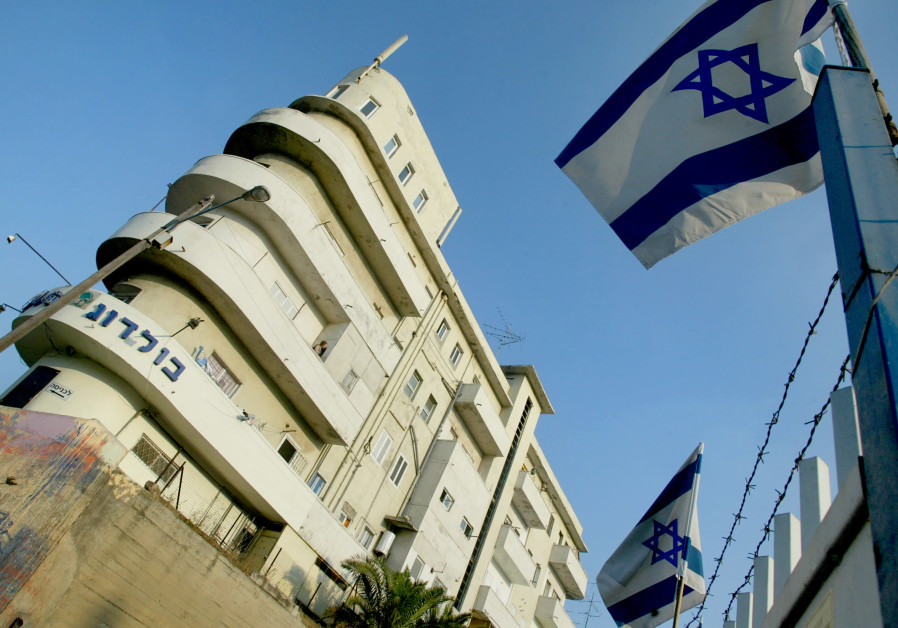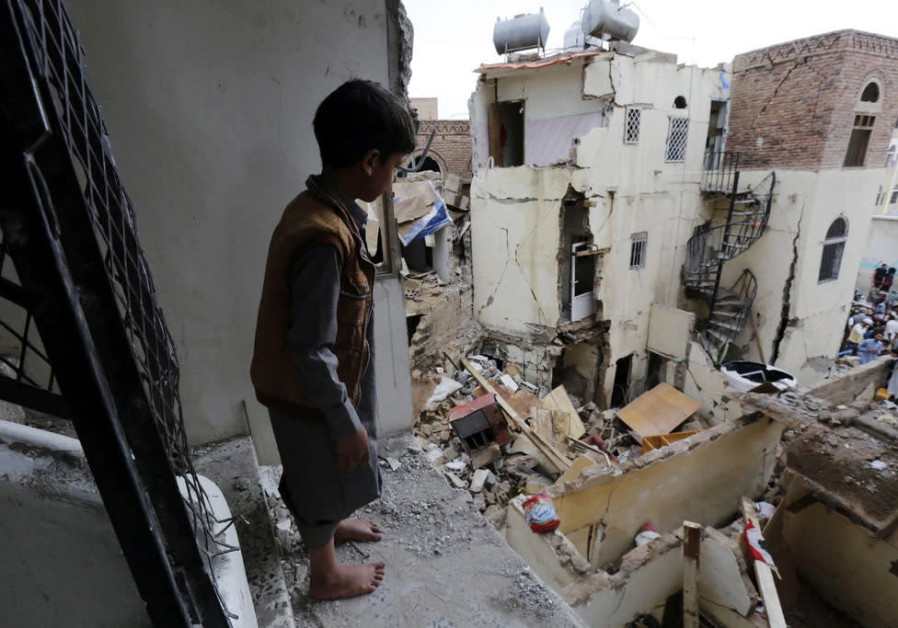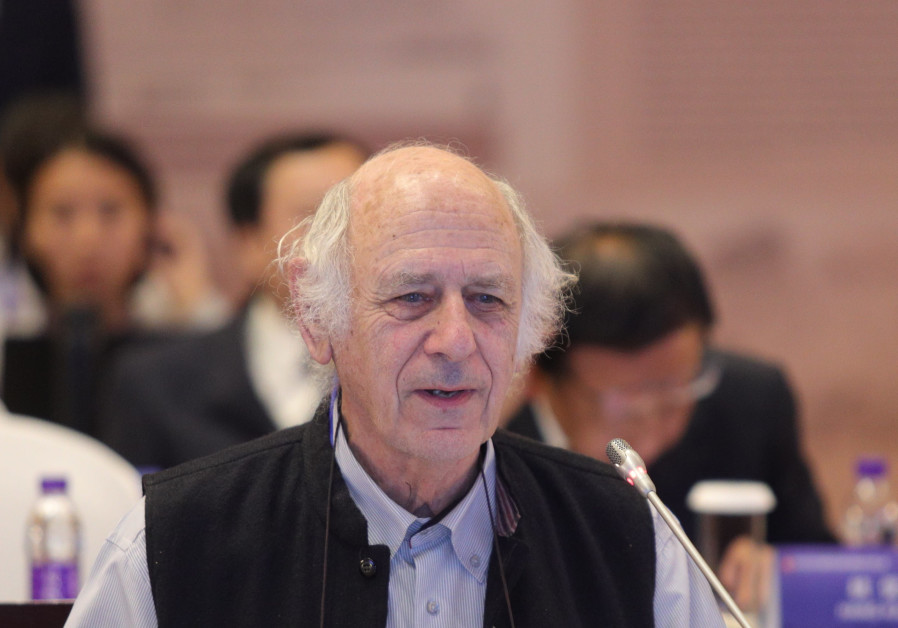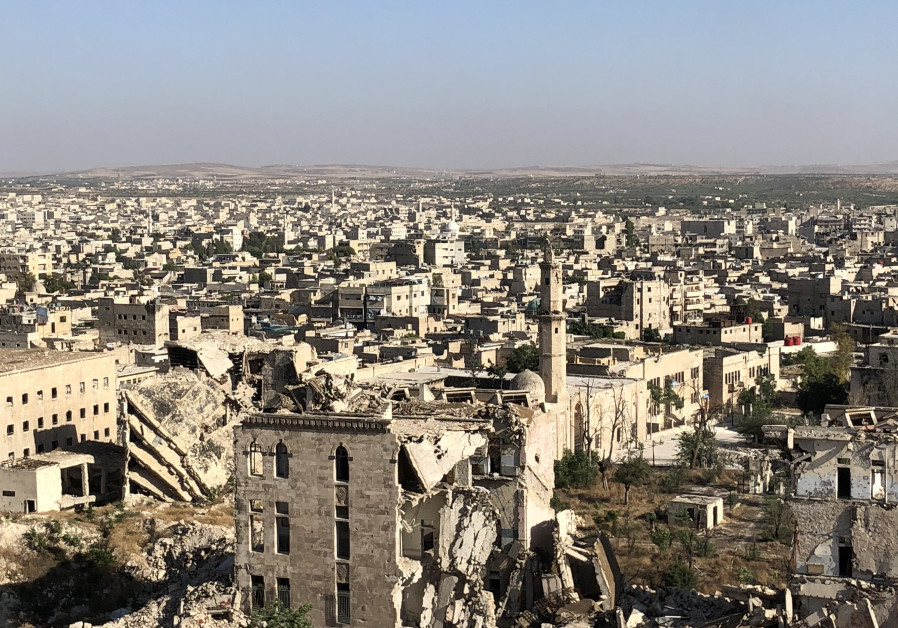 One of the positive aspects of COVID-19 is that it has shown how the countries of the world are now more interdependent than ever before. No one country has been spared the scourge of this vicious virus. From Australia to England, and from Russia to Brazil, its destructive march has seemed unstoppable. Finally, countries around the world have begun cooperating to inoculate their citizens, with Israel leading the pack in its speedy vaccination campaign. In a similar manner, the organization to preserve and foster ancient heritage sites and traditions has found itself dependent on the cooperation of many elements worldwide. Such phenomena as global warming or air pollution, not to mention civil wars and new types of viruses, have all affected the way in which the human species preserves or neglects its collective history. The World Heritage Convention was set up almost half a century ago with the express purpose of locating and preserving physical and cultural sites around the world. It has, as of now, some 1,120 sites – just short of being a universal convention – signed by 193 countries (even though some of the signatories have no sites of their own). There are 10 sites in the Holy Land, including the Nabatean cities of the Negev desert, the White City of Tel Aviv’s international-style houses, the Baha’i holy places in Haifa and the Western Galilee, and the Old City of Jerusalem, which happens to have been proposed by Jordan and is listed as being in East Jerusalem and not in Israel.
One of the positive aspects of COVID-19 is that it has shown how the countries of the world are now more interdependent than ever before. No one country has been spared the scourge of this vicious virus. From Australia to England, and from Russia to Brazil, its destructive march has seemed unstoppable. Finally, countries around the world have begun cooperating to inoculate their citizens, with Israel leading the pack in its speedy vaccination campaign. In a similar manner, the organization to preserve and foster ancient heritage sites and traditions has found itself dependent on the cooperation of many elements worldwide. Such phenomena as global warming or air pollution, not to mention civil wars and new types of viruses, have all affected the way in which the human species preserves or neglects its collective history. The World Heritage Convention was set up almost half a century ago with the express purpose of locating and preserving physical and cultural sites around the world. It has, as of now, some 1,120 sites – just short of being a universal convention – signed by 193 countries (even though some of the signatories have no sites of their own). There are 10 sites in the Holy Land, including the Nabatean cities of the Negev desert, the White City of Tel Aviv’s international-style houses, the Baha’i holy places in Haifa and the Western Galilee, and the Old City of Jerusalem, which happens to have been proposed by Jordan and is listed as being in East Jerusalem and not in Israel. The basic idea of this list was to highlight the importance to humanity as a whole of these historic places and to create lasting memorials to their achievements.However, in the past couple of decades, these sites have become more exposed to the ravages of time as well as to man-made plans that have led to their destruction or total neglect. Examples include places where someone (a government or private entrepreneur) wants to dig a mine or build a dam that just happens to be on a World Heritage site.
The basic idea of this list was to highlight the importance to humanity as a whole of these historic places and to create lasting memorials to their achievements.However, in the past couple of decades, these sites have become more exposed to the ravages of time as well as to man-made plans that have led to their destruction or total neglect. Examples include places where someone (a government or private entrepreneur) wants to dig a mine or build a dam that just happens to be on a World Heritage site.  These may be legitimate projects but what are the criteria for making a decision that will affect the site? Who is responsible for executing such plans? Is it confined to the local authority such as a government or should there be some international body that makes the decision? How can a site be protected against terrorist actions such as happened with the Taliban or ISIS when they decided to destroy ancient religious monuments because they went against their own Islamic ideology? Who is there to stop them?This worldwide situation caused concerned citizens of World Heritage to come up with a plan to renew their efforts and to relaunch themselves under the rubric of “Our World Heritage.”“When the World Heritage Convention was established in 1972, it did so with little reference to civil society,” Mike Turner tells The Jerusalem Report. Turner, who was the Israeli representative for World Heritage from the time that Israel joined the convention until 2011, is still, at the age of 80, involved in its nuts-and-bolts organization.
These may be legitimate projects but what are the criteria for making a decision that will affect the site? Who is responsible for executing such plans? Is it confined to the local authority such as a government or should there be some international body that makes the decision? How can a site be protected against terrorist actions such as happened with the Taliban or ISIS when they decided to destroy ancient religious monuments because they went against their own Islamic ideology? Who is there to stop them?This worldwide situation caused concerned citizens of World Heritage to come up with a plan to renew their efforts and to relaunch themselves under the rubric of “Our World Heritage.”“When the World Heritage Convention was established in 1972, it did so with little reference to civil society,” Mike Turner tells The Jerusalem Report. Turner, who was the Israeli representative for World Heritage from the time that Israel joined the convention until 2011, is still, at the age of 80, involved in its nuts-and-bolts organization.  He is the first to admit that the older generation failed in its purpose to prevent the worldwide destruction of many of these sites. “The world has changed a lot since the convention was signed,” he observes. “Thankfully there is a younger generation of people – of academics, researchers, activists and just ordinary citizens – who care deeply for the planet and all of its inhabitants and are eager to act for its benefit. These are all unpaid volunteers who realize that the challenges they face can only be solved, if at all, by governments working with the people. What is needed is a ground-up movement and these people are providing its basis,” Turner summarizes.One of the negative developments that is hinted at here is the shift toward narrow nationalism, which has resulted in governments or others in authority, of putting local interests above that of international ones. This has led to the destruction of some of the sites, either directly or indirectly. This was seen dramatically in the case of the Taliban who decimated ancient Buddhist statues. Another example is the Stonehenge site in southern England, which is under a threat of being literally undermined by a new road system. In the first case, irreplaceable monuments were destroyed forever, in the second, a major prehistoric site is being made hostage to the needs of the car.What “Our World Heritage” proposes is to tackle the many issues it has located in which they can affect the conservation of sites and traditions that are still savable. It’s all about bridging the generation gap, Turner says.“Whereas the older volunteers can help spotlight places which are in danger, the younger people can actively work on making the necessary changes,” he says. “One of the major changes in the past two or three decades is in the technology we use to communicate. This has increased intelligence and awareness worldwide. The younger generation who were born in the era of the Internet, Twitter, Instagram and so on have much easier access to data and the real knowledge of what is going on in the world. From a very early age, school children are now being taught about the necessity of looking after the environment and of not throwing things away or abandoning them, as well as the importance of recycling. Governments must respond. As these children grow up and become part of the electorate, they will have power that never existed beforehand. It is already far harder for governments or individuals to hide what they are doing, especially when it comes to the landscape, to ancient sites of historical interest. Together, this generation can access the institutions that are able to protect these sites and their traditions. These will be seen more and more as international projects, worthwhile to save for their intrinsic value for humanity and this should overtake any narrower national interests.”Major eruptions to the status quo that threaten these venerable sites include civil wars (they are much more frequent than international ones), and natural disasters such as tsunamis or volcanoes. But even on an even playing field where all the conditions are met for a public discussion, there still can be bureaucratic or political actions that can prevent a project from being established.“What needs to be developed,” says Turner, “is a strong civil society. A strong civil society means a strong society.”He sees in Israel, for example, the existence of multiple welfare groups (gemachim in Hebrew) as a wonderful model of bottom-up organizations that really work for the benefit of everyone. “If people are given the feeling that a certain site is theirs, then they are more likely to look after it,” he says. “If the management of Megiddo, for example, was given to the local community and they saw it as theirs, then they would surely make the effort to preserve and protect it and its surroundings.”In a promotional video, Irina Bokova, who served as director-general of UNESCO between 2009 and 2017, speaks of the World Heritage Convention as being a huge success. “The treaty is universal, a unifying force more successful than any other project of the organization,” she says. Nevertheless, she is aware of the shortcomings which urgently need to be addressed. “Governments have to take responsibility and work with groups in civil society,” she says. This means pinpointing areas in which a governmental decision can save or destroy a particular project. One example she gives is how tourism, which is one of the biggest industries in the world, if not indeed the biggest, can be just as destructive of the environment as it can be beneficial.
He is the first to admit that the older generation failed in its purpose to prevent the worldwide destruction of many of these sites. “The world has changed a lot since the convention was signed,” he observes. “Thankfully there is a younger generation of people – of academics, researchers, activists and just ordinary citizens – who care deeply for the planet and all of its inhabitants and are eager to act for its benefit. These are all unpaid volunteers who realize that the challenges they face can only be solved, if at all, by governments working with the people. What is needed is a ground-up movement and these people are providing its basis,” Turner summarizes.One of the negative developments that is hinted at here is the shift toward narrow nationalism, which has resulted in governments or others in authority, of putting local interests above that of international ones. This has led to the destruction of some of the sites, either directly or indirectly. This was seen dramatically in the case of the Taliban who decimated ancient Buddhist statues. Another example is the Stonehenge site in southern England, which is under a threat of being literally undermined by a new road system. In the first case, irreplaceable monuments were destroyed forever, in the second, a major prehistoric site is being made hostage to the needs of the car.What “Our World Heritage” proposes is to tackle the many issues it has located in which they can affect the conservation of sites and traditions that are still savable. It’s all about bridging the generation gap, Turner says.“Whereas the older volunteers can help spotlight places which are in danger, the younger people can actively work on making the necessary changes,” he says. “One of the major changes in the past two or three decades is in the technology we use to communicate. This has increased intelligence and awareness worldwide. The younger generation who were born in the era of the Internet, Twitter, Instagram and so on have much easier access to data and the real knowledge of what is going on in the world. From a very early age, school children are now being taught about the necessity of looking after the environment and of not throwing things away or abandoning them, as well as the importance of recycling. Governments must respond. As these children grow up and become part of the electorate, they will have power that never existed beforehand. It is already far harder for governments or individuals to hide what they are doing, especially when it comes to the landscape, to ancient sites of historical interest. Together, this generation can access the institutions that are able to protect these sites and their traditions. These will be seen more and more as international projects, worthwhile to save for their intrinsic value for humanity and this should overtake any narrower national interests.”Major eruptions to the status quo that threaten these venerable sites include civil wars (they are much more frequent than international ones), and natural disasters such as tsunamis or volcanoes. But even on an even playing field where all the conditions are met for a public discussion, there still can be bureaucratic or political actions that can prevent a project from being established.“What needs to be developed,” says Turner, “is a strong civil society. A strong civil society means a strong society.”He sees in Israel, for example, the existence of multiple welfare groups (gemachim in Hebrew) as a wonderful model of bottom-up organizations that really work for the benefit of everyone. “If people are given the feeling that a certain site is theirs, then they are more likely to look after it,” he says. “If the management of Megiddo, for example, was given to the local community and they saw it as theirs, then they would surely make the effort to preserve and protect it and its surroundings.”In a promotional video, Irina Bokova, who served as director-general of UNESCO between 2009 and 2017, speaks of the World Heritage Convention as being a huge success. “The treaty is universal, a unifying force more successful than any other project of the organization,” she says. Nevertheless, she is aware of the shortcomings which urgently need to be addressed. “Governments have to take responsibility and work with groups in civil society,” she says. This means pinpointing areas in which a governmental decision can save or destroy a particular project. One example she gives is how tourism, which is one of the biggest industries in the world, if not indeed the biggest, can be just as destructive of the environment as it can be beneficial.  “It must be sustainable,” says Bokova, “which is to say that it should not be allowed to develop against the environment, or where it destroys some historical site for the sake of tourist comfort, or where it leads to the neglect of a world heritage site by lacking the necessary funds.” Charlotte Karibuhoye, the director of West Africa programs from Senegal, observes, “Half of the World Heritage sites in Africa are not well protected. They need investment to maintain them which means that both governments and civil society need to become more involved.” Aruna Bagchee, an adviser of public policy in India and chair of the Indian National Trust for Art and Cultural Heritage, believes that many groups need to cooperate, including industry and cultural institutions. She is particularly concerned that governments deal with the dangers of mining and poaching. On the positive side ,she says that it is important to highlight successes, because there have been many, and this can reinforce the sense that positive change is possible. One other problem that faces the world heritage team was the focus of Jad Tabet’s presentation, namely that of violence. Tabet, president of the Order of Architects and Engineers in Lebanon, is well aware of the damage caused by violence and the threat it holds to cultural sites. This must be factored in, Taber argues, if a realistic approach is adopted to make sure monuments and historic sites are maintained.In the coming year, leading up to the 50th anniversary of the World Heritage Convention, there will be monthly thematic discussions around the globe about critical issues of conservation and management which will be open to the public. These aim to inspire the global population to become involved in World Heritage preservation activities. The discussions will address information technology, tourism, diversity, human rights, disasters and pandemics, new heritage approaches, sustainability, climate change and biodiversity, World Heritage sites and memory, conflict, and opening up to civil society. The Technion, University of Haifa and Bezalel Academy will be active in these debates.Danny Bar’eli, a former secretary-general of the Israel National Commission for UNESCO in the Education Ministry, urges Our World Heritage to be more assertive, especially regarding the need for top experts to be on the committees that discuss the issues that concern them. “The stakeholders should not only be governments but also ordinary citizens,” Bar’eli says.■
“It must be sustainable,” says Bokova, “which is to say that it should not be allowed to develop against the environment, or where it destroys some historical site for the sake of tourist comfort, or where it leads to the neglect of a world heritage site by lacking the necessary funds.” Charlotte Karibuhoye, the director of West Africa programs from Senegal, observes, “Half of the World Heritage sites in Africa are not well protected. They need investment to maintain them which means that both governments and civil society need to become more involved.” Aruna Bagchee, an adviser of public policy in India and chair of the Indian National Trust for Art and Cultural Heritage, believes that many groups need to cooperate, including industry and cultural institutions. She is particularly concerned that governments deal with the dangers of mining and poaching. On the positive side ,she says that it is important to highlight successes, because there have been many, and this can reinforce the sense that positive change is possible. One other problem that faces the world heritage team was the focus of Jad Tabet’s presentation, namely that of violence. Tabet, president of the Order of Architects and Engineers in Lebanon, is well aware of the damage caused by violence and the threat it holds to cultural sites. This must be factored in, Taber argues, if a realistic approach is adopted to make sure monuments and historic sites are maintained.In the coming year, leading up to the 50th anniversary of the World Heritage Convention, there will be monthly thematic discussions around the globe about critical issues of conservation and management which will be open to the public. These aim to inspire the global population to become involved in World Heritage preservation activities. The discussions will address information technology, tourism, diversity, human rights, disasters and pandemics, new heritage approaches, sustainability, climate change and biodiversity, World Heritage sites and memory, conflict, and opening up to civil society. The Technion, University of Haifa and Bezalel Academy will be active in these debates.Danny Bar’eli, a former secretary-general of the Israel National Commission for UNESCO in the Education Ministry, urges Our World Heritage to be more assertive, especially regarding the need for top experts to be on the committees that discuss the issues that concern them. “The stakeholders should not only be governments but also ordinary citizens,” Bar’eli says.■
One of the positive aspects of COVID-19 is that it has shown how the countries of the world are now more interdependent than ever before. No one country has been spared the scourge of this vicious virus. From Australia to England, and from Russia to Brazil, its destructive march has seemed unstoppable. Finally, countries around the world have begun cooperating to inoculate their citizens, with Israel leading the pack in its speedy vaccination campaign. In a similar manner, the organization to preserve and foster ancient heritage sites and traditions has found itself dependent on the cooperation of many elements worldwide. Such phenomena as global warming or air pollution, not to mention civil wars and new types of viruses, have all affected the way in which the human species preserves or neglects its collective history. The World Heritage Convention was set up almost half a century ago with the express purpose of locating and preserving physical and cultural sites around the world. It has, as of now, some 1,120 sites – just short of being a universal convention – signed by 193 countries (even though some of the signatories have no sites of their own). There are 10 sites in the Holy Land, including the Nabatean cities of the Negev desert, the White City of Tel Aviv’s international-style houses, the Baha’i holy places in Haifa and the Western Galilee, and the Old City of Jerusalem, which happens to have been proposed by Jordan and is listed as being in East Jerusalem and not in Israel.




